Submitted by WA Contents
The 12 most significant projects of I.M. Pei
United States Architecture News - May 05, 2025 - 13:07 249603 views
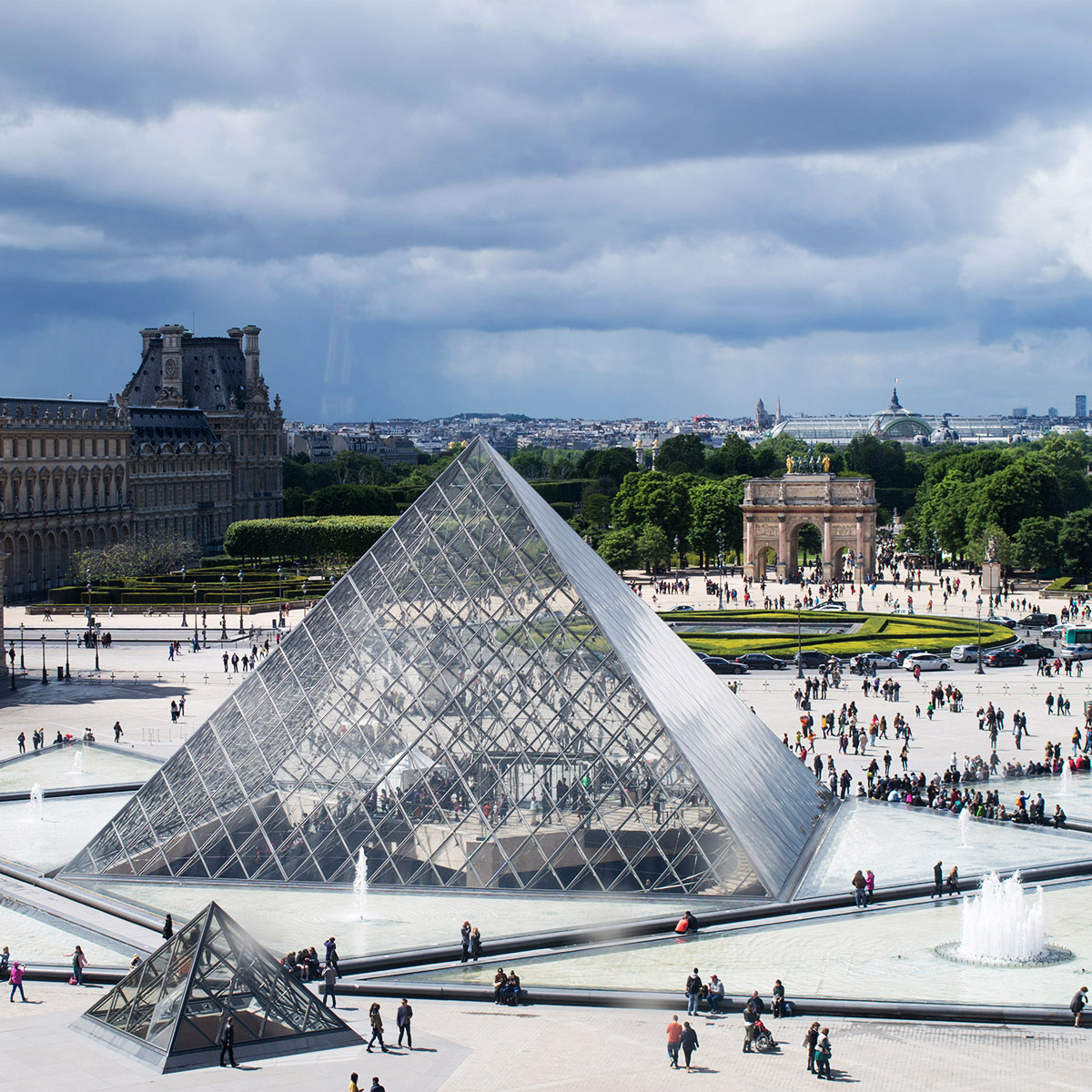
The world-renowned Chinese-American architect Ieoh Ming Pei, known as I. M. Pei, passed away on May 16, 2019, at the age of 102. The acclaimed architect is known for his bold designs and explicit geometries in his projects, spanning his career over six decades.
The Louvre Pyramid in Paris, the Bank of China Tower in Hong Kong and the East Building of the National Gallery of Art in Washington, D.C. are probably the most well-known projects in Pei's project portfolio. However, Pei's projects, including arts facilities, university buildings, libraries and civic centers, are more diverse rather than the most well-known projects.
In a jury citation for the Pritzker Prize in 1983, it was stated that "Ieoh Ming Pei’s architecture can be characterized by its faith in modernism, humanized by its subtlety, lyricism, and beauty."
Pei was born in Canton China in 1917 and came to the United States in 1935 to study first at the University of Pennsylvania and then at the Massachusetts Institute of Technology (B. Arch. 1940) and the Harvard Graduate School of Design (M. Arch. 1946).
In 1948, he accepted the newly created post of Director of Architecture at Webb & Knapp, Inc., the real estate development firm, and this association resulted in major architectural and planning projects in Chicago, Philadelphia, Washington, Pittsburgh and other cities. In 1955, he formed the partnership of I.M. Pei & Associates, which became I.M. Pei & Partners in 1966.
The partnership received the 1968 Architectural Firm Award of The American Institute of Architects. In 1989, the firm was renamed Pei Cobb Freed and Partners.
To learn more about Ieoh Ming Pei and explore his architectural oeuvre, WAC editors have selected 12 of Pei's important projects. Pei has designed over 50 projects in this country and abroad, and many of which have been award winners.
As a student, he was awarded the MIT Traveling Fellowship, and the Wheelwright Traveling Fellowship at Harvard. Pei was awarded the Gold Medal for Architecture of the American Academy of Arts and Letters in 1979, the Gold Medal of The American Institute of Architects in 1979 and the Gold Medal of the French Académie d'Architecture in 1981.
Read the 12 most significant projects of I. M. Pei:
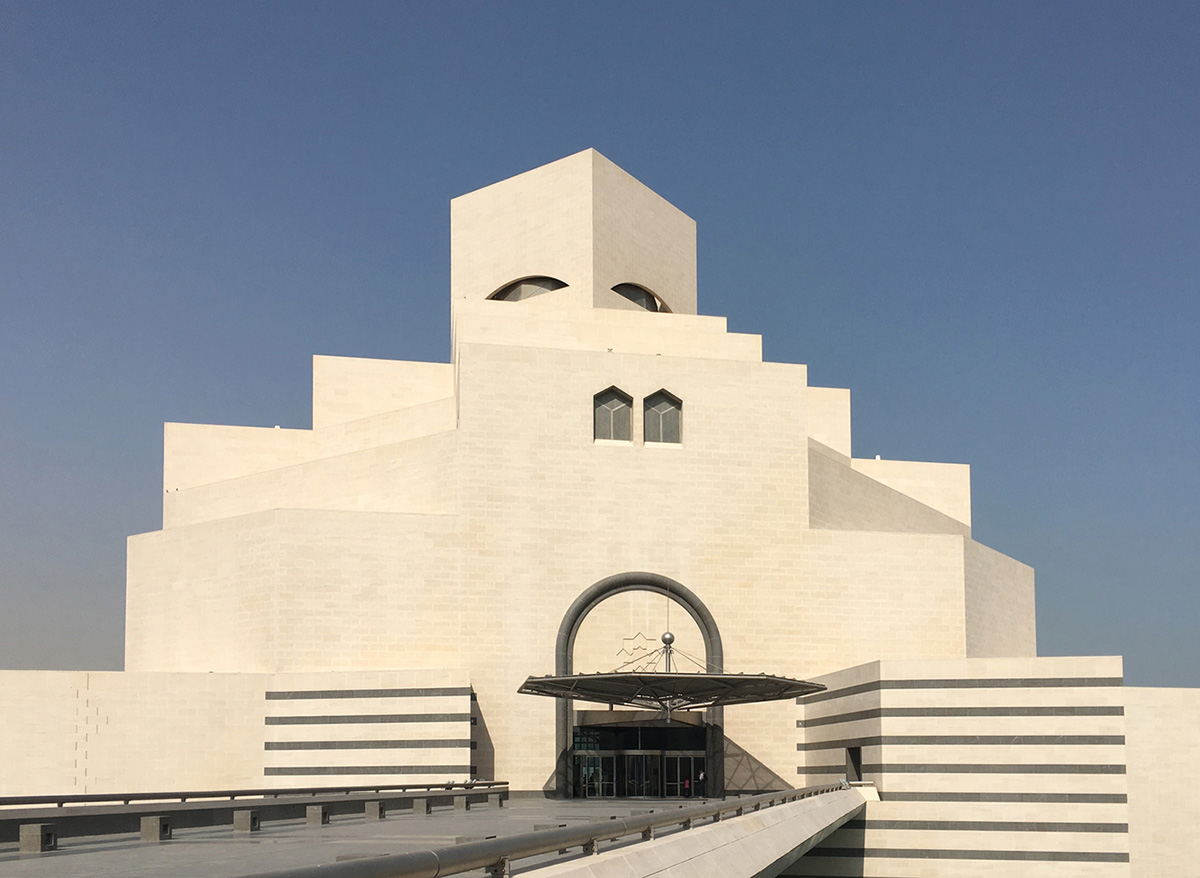
Image © Wahyu Pratomo and Kris Provoost
Museum of Islamic Art, Doha, Qatar, 2008
The Museum of Islamic Art is one of Pei's latest projects built in Doga. Built in 2008, the museum building has rapidly become an iconic feature of the Doha landscape. Standing alone on reclaimed land, the building draws much influence from ancient Islamic architecture, notably the Ibn Tulun Mosque in Cairo.
The Museum is comprised of a main building with an adjacent education wing connected by a large central courtyard. The main building rises five-storeys, topped by a high domed atrium within a central tower. The cream-coloured limestone captures the changes in light and shade during the day. The centrepiece of the atrium is a curved double staircase leading up to the first floor. Above it floats an ornate circular metal chandelier echoing the curve of the staircase.
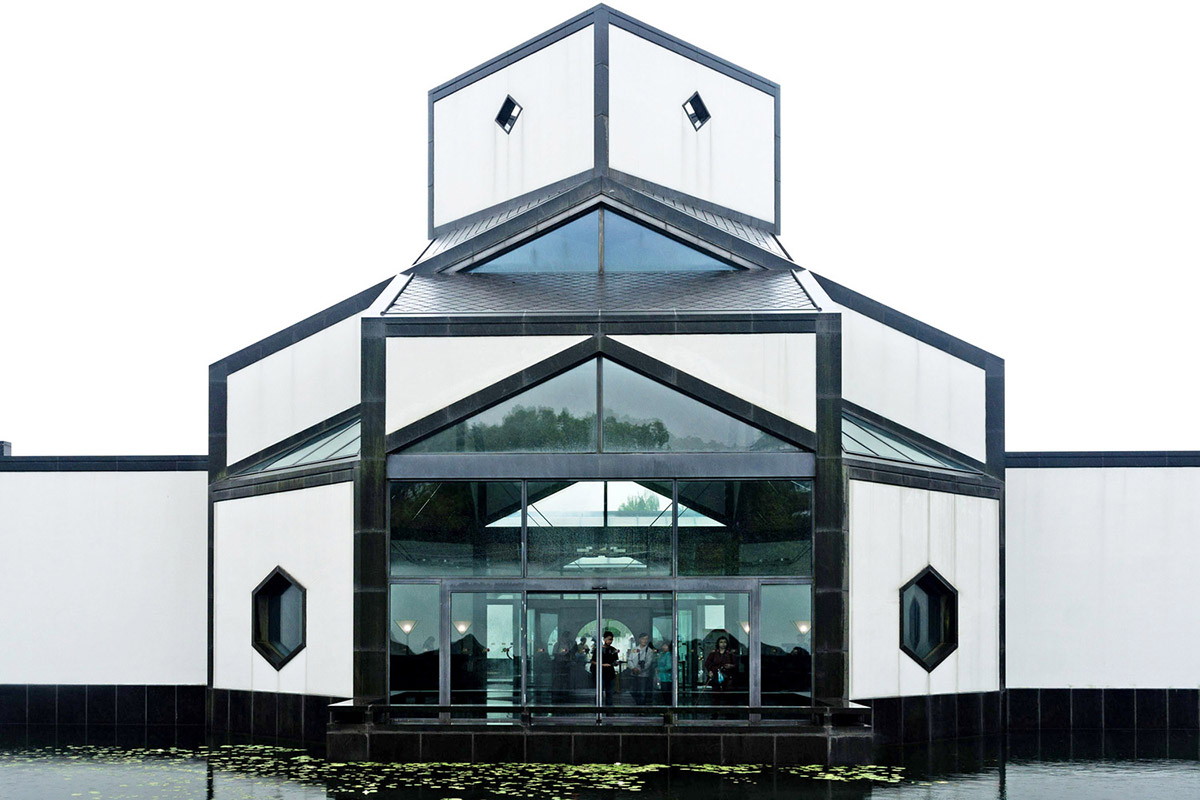
Image © Chenxing Mi
Suzhou Museum, Suzhou, China, 2006
Founded in 1960 and originally located in the national historic landmark, Zhong Wang Fu palace complex, Suzhou Museum has been a highly-regarded regional museum with a number of significant Chinese cultural relics.
A new museum designed by world famous architect I.M.Pei was completed in October 2006, covering over 10,700 square meter and located at the cross of Dongbei Street and Qimen Road. The design of this new museum visually complements the traditional architecture of Zhong Wang Fu.
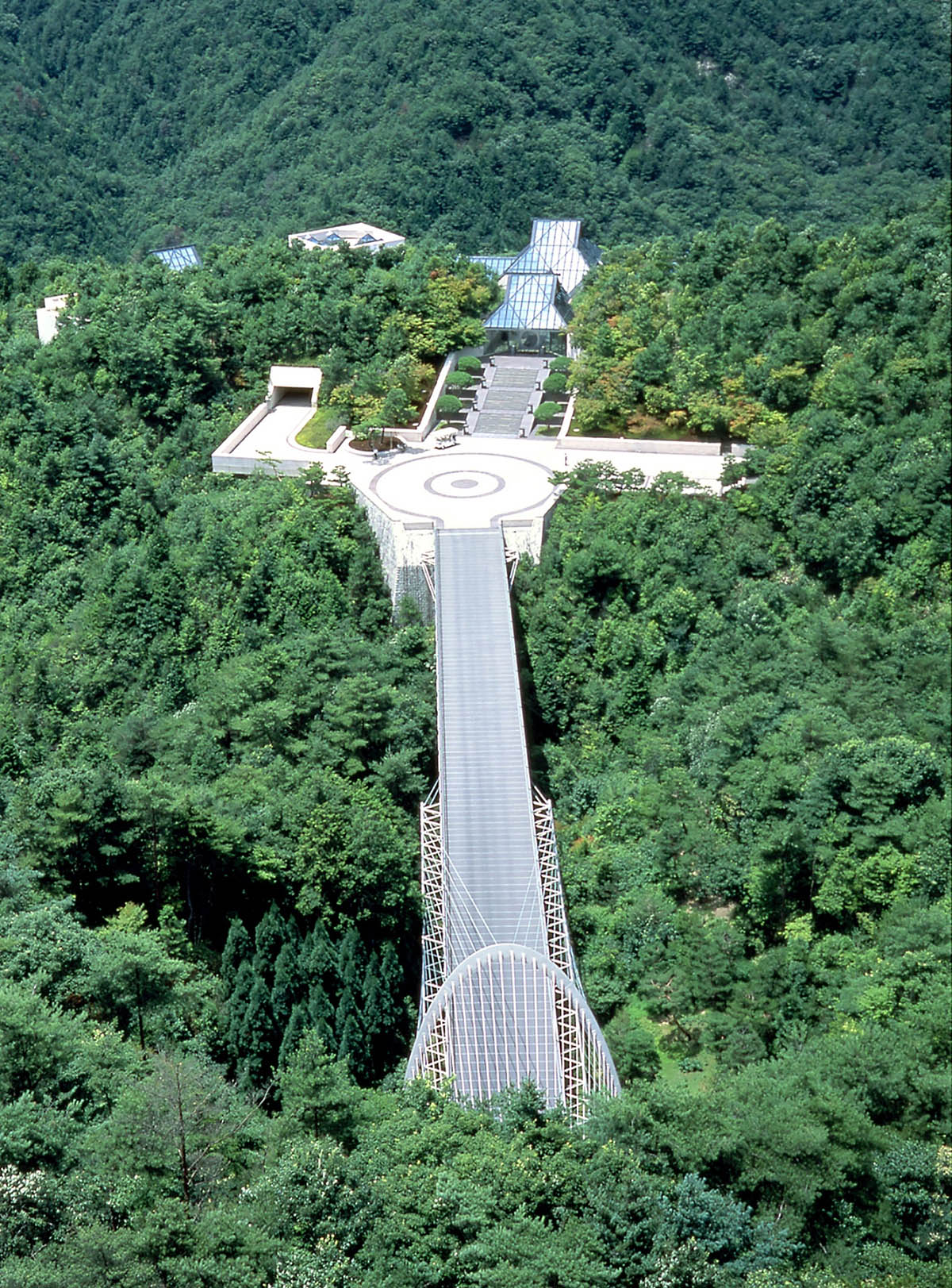
Image © Miho Museum
Miho Museum, Kyoto, Japan, 1997
The Miho Museum is situated in the natural rich mountains of Shigaraki, Japan. Pei's concept is based on the Taoyuan Township, which is a destination town drawn by the Chinese poet 'Peach Flower Geno', is guided by the tree-lined path of the weeping cherry blossoms, beyond the tunnel and the suspension bridge to the art museum.
As visitors travel through the beautiful arcing tunnel, they see an entrance with a grommet-shaped roof on the other side of the bridge over the valley. When visitors step into the calm entrance, they are surrounded by the light that is falling from the glass roof and the gentle beige limestone wall, and a large space with a row of gentle mountains will extend to the far side.
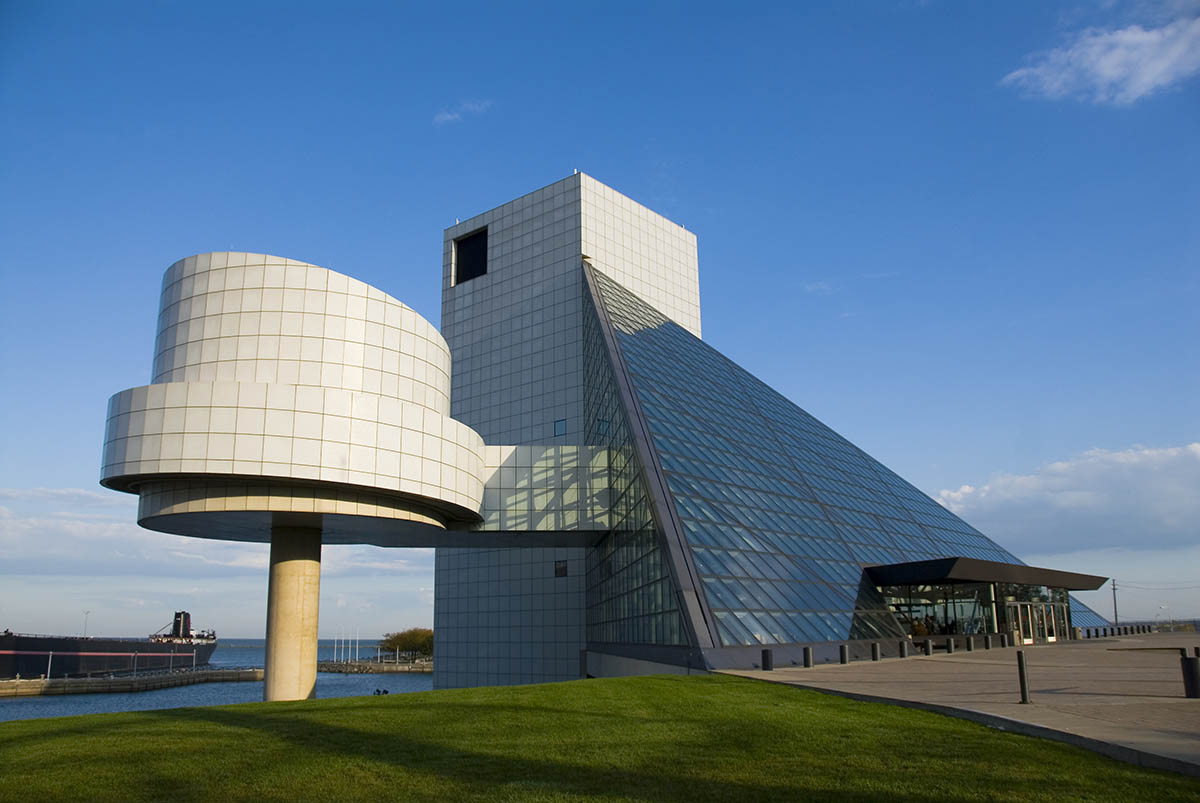
Image courtesy of Pei Cobb Freed and Partners
Rock and Roll Hall of Fame, Cleveland, USA, 1995
Located in Cleveland, Ohio, Pei's designe embodies the music celebrated within, the building is an icon of the city that coined the term "rock and roll". The architect juxtaposed simple geometric forms to combine diverse functions within a unified whole: a theater cantilevered over Lake Erie one one side balances a circular performance drum on the other, while a 165-foot-high orthogonal tower rises from the water to engage a tetrahedral tower tent.
Pei's building acts like an explosive musical chord, the sculptural components reverberate out from the center. Set back in 1.2-acre performance plaza on the roof of the main exhibition space, the building rises with eight unique floor plates of decreasing size, culminating in the Hall of Fame, contemplative fiber optics chamber.
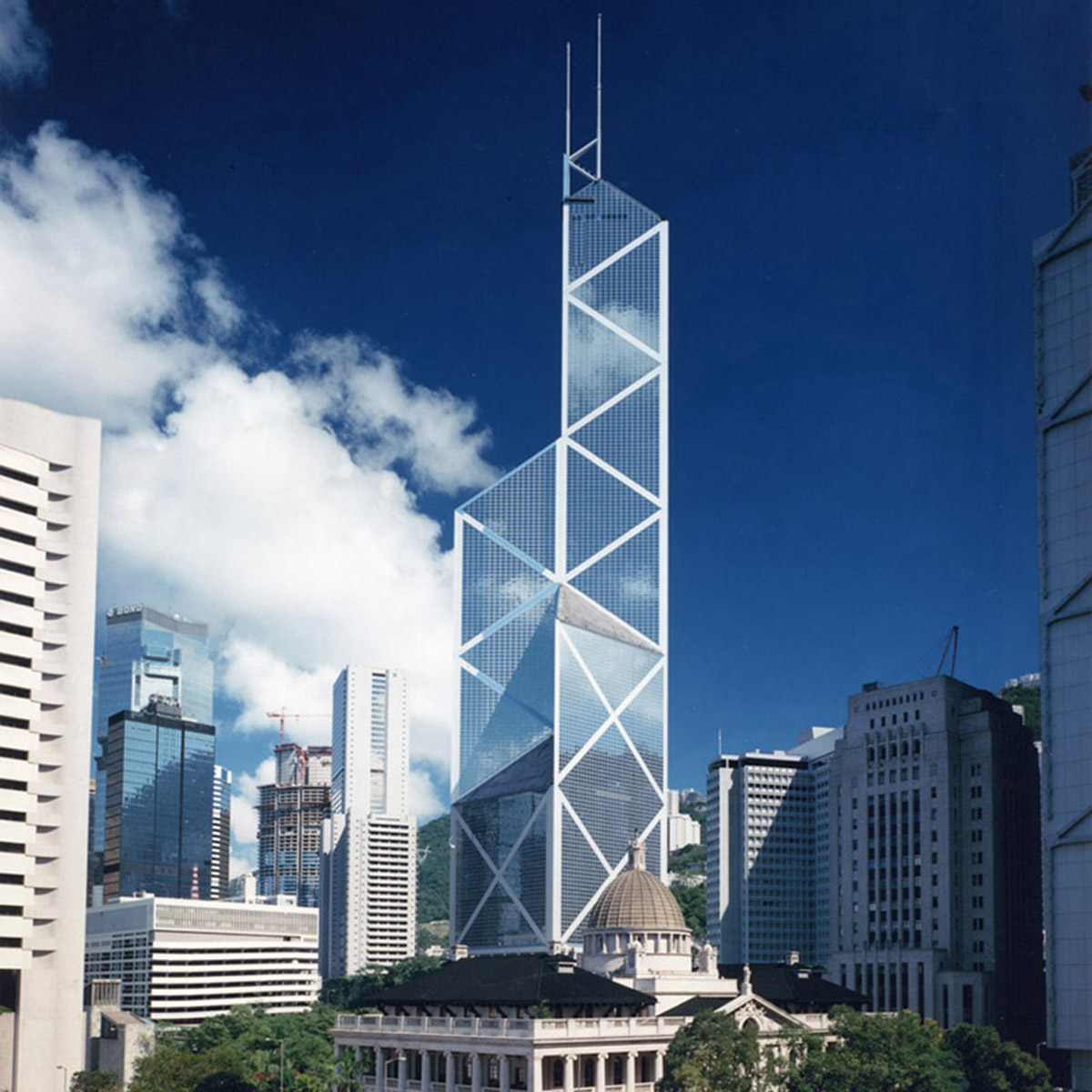
Image courtesy of Wikipedia
Bank of China Tower, Hong Kong, China, 1990
Completed in 1990, Pei's tower represents the successful integration of structure and form to meet the needs of both client and city. With a limited budget and a difficult inland site, the owner requested a distinctive regional headquarters with an imposing banking hall and 130,000-square-metre of office space.
Pei designed a tall and dynamic structure that responds to that criteria. The tower would take advantage of the surrounding views while being robust enough to withstand a typhoon.

Image © João Pereira de Sousa
Le Grand Louvre, Paris, France, 1989
The expansion and modernization of the historic Louvre was probably one of the most iconic buildings of I.M. Pei. The challenge was to modernize and expand the building and better integrate it with the city, all without compromising the integrity of historic structure.
A centrally located glass pyramid forms the main entrance and provides direct access to galleries in each of the museum's three wings. The pyramid's distinctly modern articulation complements the historic Louvre in a dialogue of harmonious contrast.

Image courtesy of Wikipedia
John F. Kennedy Presidential Library and Museum, Boston, USA, 1979
Pei was commissioned to design the John F. Kennedy Presidential Library and Museum to the memory of the United States' 35th president. Located on a 10-acre park, overlooking the sea that he loved and the city that launched him to greatness, the Library stands as a vibrant tribute to the life and times of John F. Kennedy.
Designed as a timeless piece, the building is overlooking Boston, and the ocean and beyond, the former landfill site was planted with beach grass to recall Kennedy's love of the sea. A split-level design organizes museum spaces in a layer below ground, with key emotive elements dramatically isolated above.
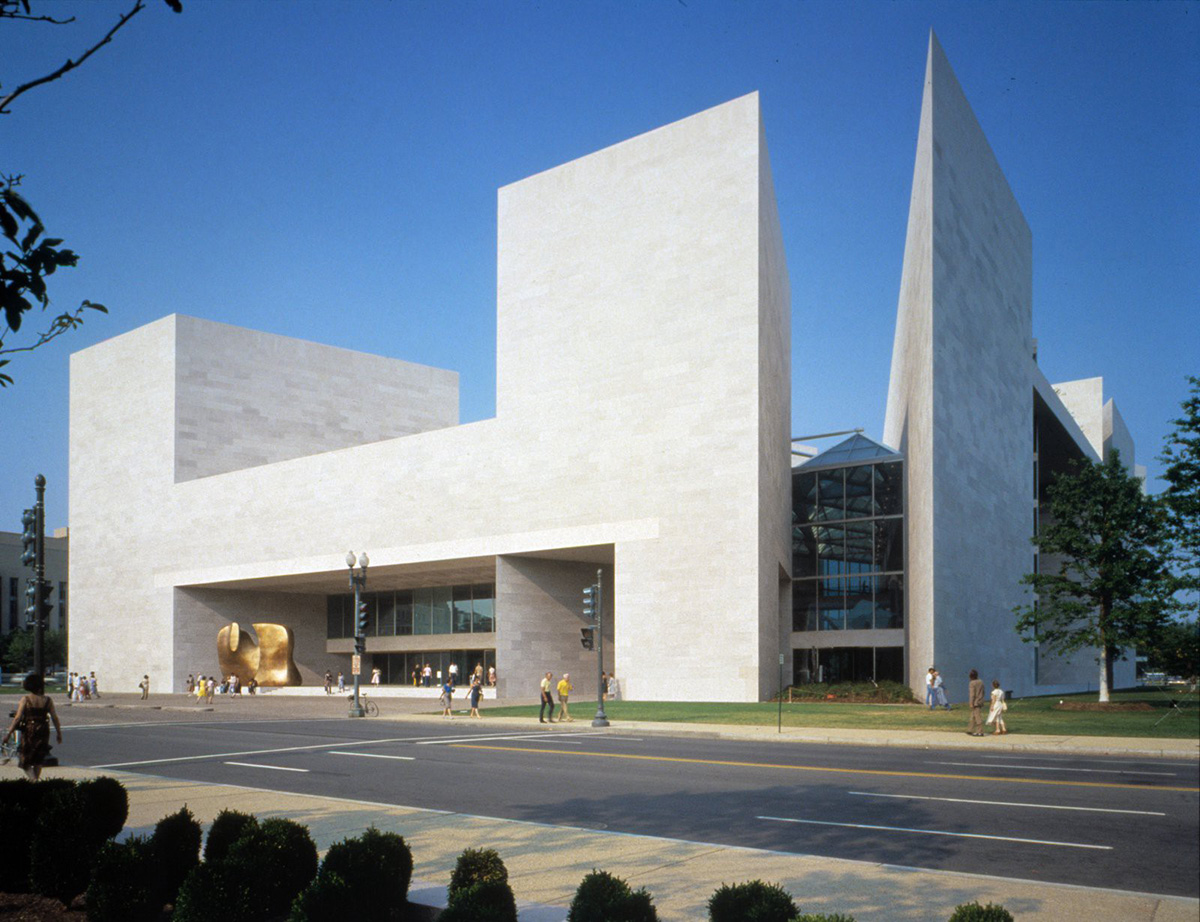
Image courtesy of Medium
National Gallery of Art East Building, Washington DC, USA, 1978
Pei divided the trapezoidal site into two and design designed triangular buildings joined by a central atrium. In plan, section, and elevation, the interlocking volumes merge inseparably in a spatial dialogue of rigorous geometry, technical innovation, and exacting craftsmanship. Three flexible towers are organized around a light-filled central atrium, providing space for exhibitions of different scales.

Image courtesy of Art Street Architecture
Dallas City Hall, Dallas, USA, 1978
The project was completed in three phases. The City accepted the garage parking areas in November 1974, the Park Plaza in May 1976, and the building in December 1977. The cost of design and construction of the building, the Park Plaza and the garage was over $70 million. Controversies arose over cost overruns (the original estimated cost was $42.2 million) and aesthetic issues (was the building too avant-garde?) - the problems were addressed, and work moved on to completion.
Pei used cast-in-place concrete structure to make integral to both to interior and exterior of City Hall, to both building and park. Sloping outward at an age of 34 degrees, each floor is about nine feet wider than the one below. The 560-foot-long from has both a symbolic and functional logic.
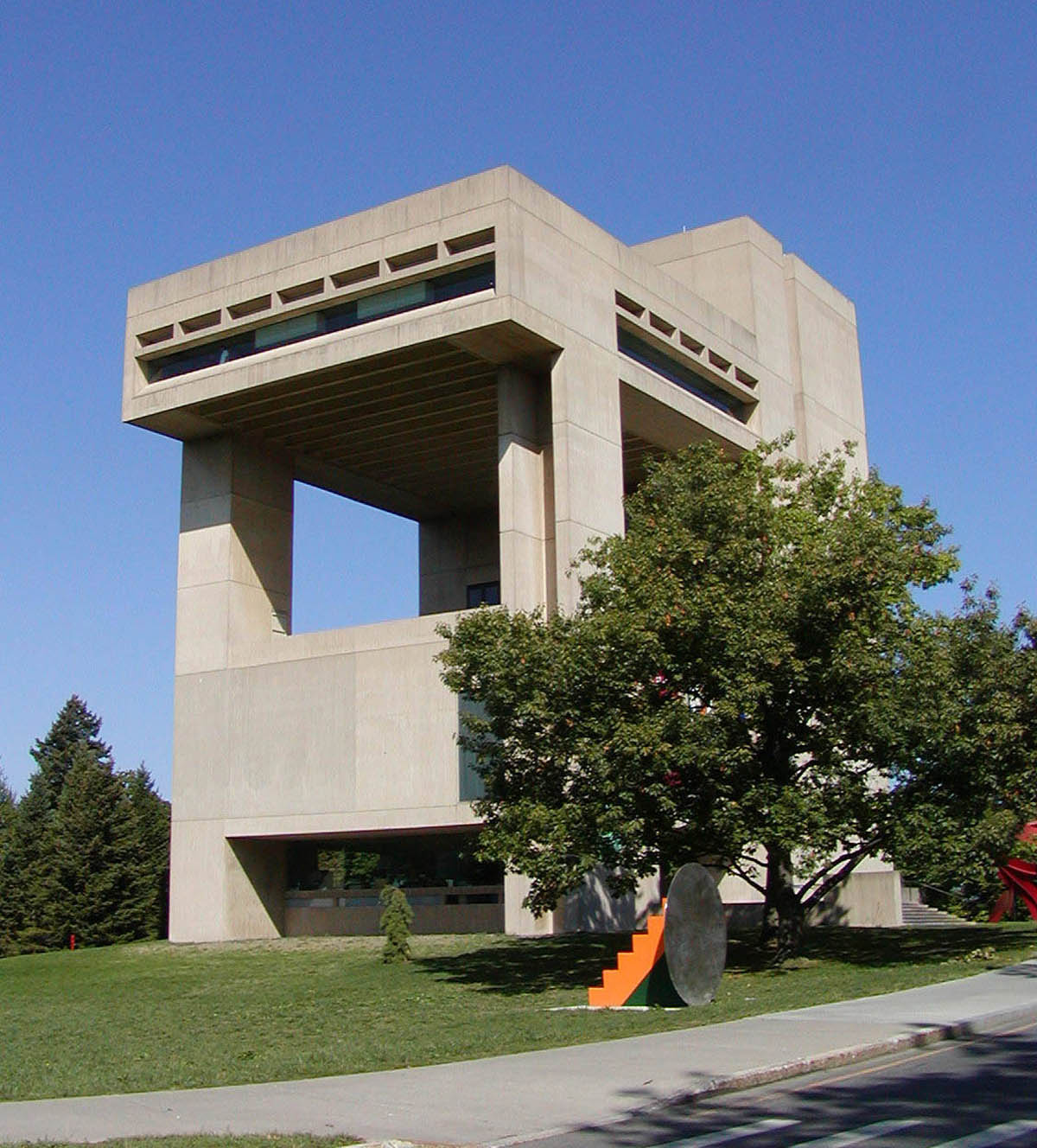
Image courtesy of Wikipedia
Herbert F. Johnson Museum of Art, Cornell University, Ithaca, New York, 1973
Pei received a commission in 1968 to design the Herbert F. Johnson Museum of Art. The building was to be the third museum building created by the ten-year-old firm, and the largest, most complex one to that date. Pei's design is a singular building type: a museum and teaching facility, one that would function for the University and contribute to the cultural life of the surrounding community.
During design process, it was stated that in the designing of a complex building form it was crucial to create a framework, or modular grid, for an organized development of the plans. This unit of measure, and armature for planning, was vital for establishing order during the progress of the design. It was also useful for the coordination of plan with elevations, inherently providing a rhythm to the structure.
In the opening, Pei said he no longer had any doubt as to the appropriateness of the solution. It had engaged the site with its interplay of solid and void, and maintained an architectural relationship with the buildings of the Quad through its basically rectangular form.

Image © Jesse Ganes
Everson Museum, Syracuse, New York, United States, 1968
Pei designed a series of four cantilevered boxes that are interconnected around an atrium sculpture court. Each of a different size and ceiling height, these galleries rise above a 5-foot podium housing museum services and public spaces accessible after the main galleries are closed.
Like a piece of sculpture installed in a plaza, the museum's compact size and attention to detail make the three-story building the focal point within a larger civic and cultural complex. Poured-in-place concrete mixed with a local granite aggregate complements Syracuse's numerous sandstone buildings.
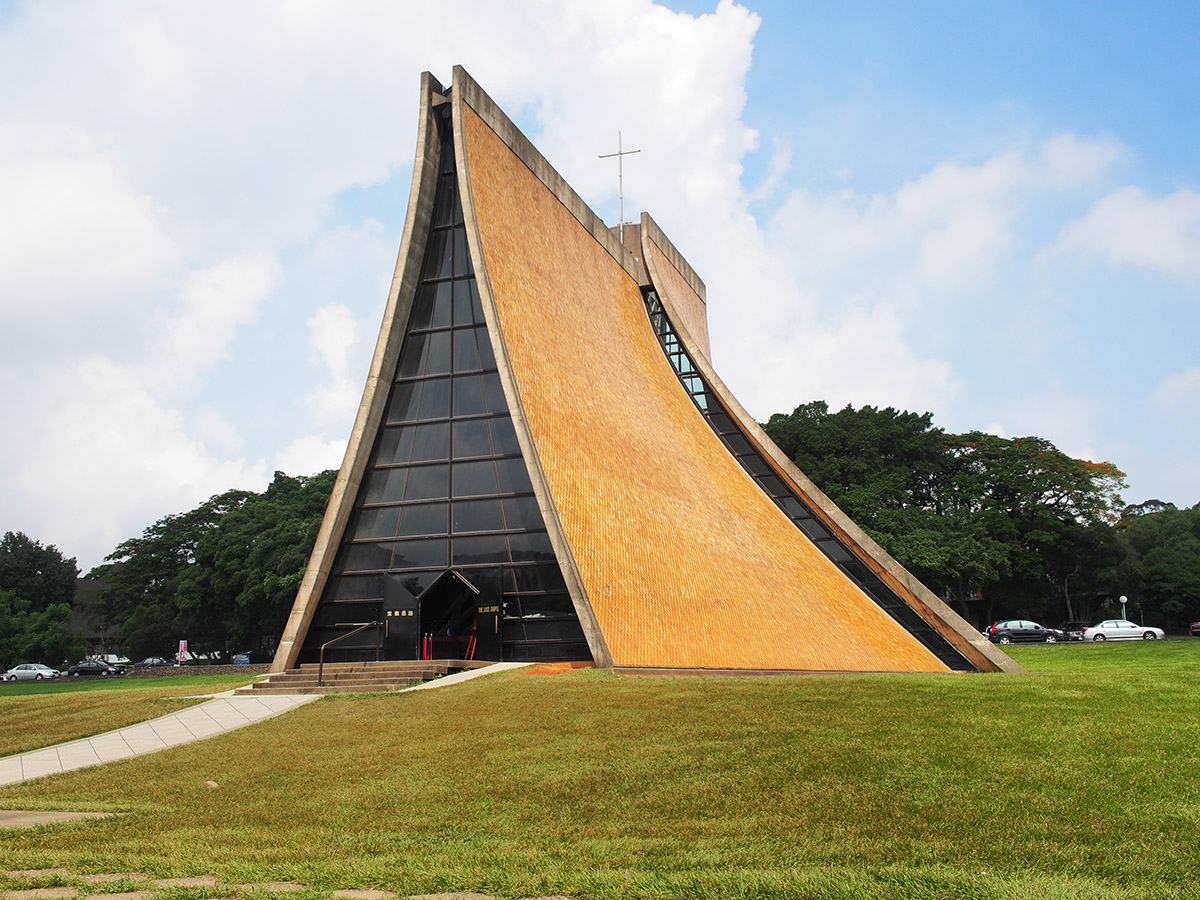
Image courtesy of Commons Wikimedia
Luce Memorial Chapel, Taichung, Taiwan, 1963
Pei's triangular-shaped chapel is located in the center of Tunghai University, Taichung City, Taiwan. The designers are I. M. Pei, Chi-Kwan Chen and Chao-kang Chang. The form of this chapel can be conceived as a unique, just like a pair of praying hands toward sky. There is no column in the Luce Memorial Chapel.
Initially beginning in April of 1954, the construction of the Luce Memorial Chapel took place from September 1962 until November 1963. I.M. Pei was careful to design specific to the environmental context of Taiwan, with walls built from reinforced concrete to provide earthquake stability and durability in the humid and typhoon-prone environment. Construction of the intricate and elaborate formwork was done locally by craftsmen.
Who is I.M. Pei and what did he do? Ieoh Ming Pei, an American architect of Chinese descent, is renowned for his expansive, elegantly planned urban complexes and structures. In 1983, he was awarded the coveted Pritzker Prize.
Who was the Chinese architect who designed the Louvre Pyramid? A gigantic entrance in the style of a pyramid was created by Chinese-American architect Ieoh Ming Pei! He aimed to transform the palace's very heart with an ambitious project. The Louvre is one of the rare museums with a piece of art in the entrance hall, thanks to his outstanding masterpiece.
What is the design theory of I.M. Pei? Pei brought his own interpretation to the fundamental modernist principle that form follows function. According to Pei, intention—which includes function—comes before form. His use of functional symbols in all of his outstanding works is a reflection of this concept.
What is the style of architecture of I.M. Pei? Ieoh Ming Pei's work is distinguished by its belief in modernity, which is humanized by its "subtlety, lyricism, and beauty", according to the Pritzker Architecture Prize.
What word best describes I.M. Pei's work as an architect? Since I.M. Pei created ground-breaking designs that revolutionized architectural techniques, his work is best characterized as innovative. His innovative use of materials and contemporary techniques is demonstrated by notable projects such as the Louvre Pyramid.
This article was originally published on the World Architecture Community on 17 May 2019. It was updated with additional information on 21 April 2025.
